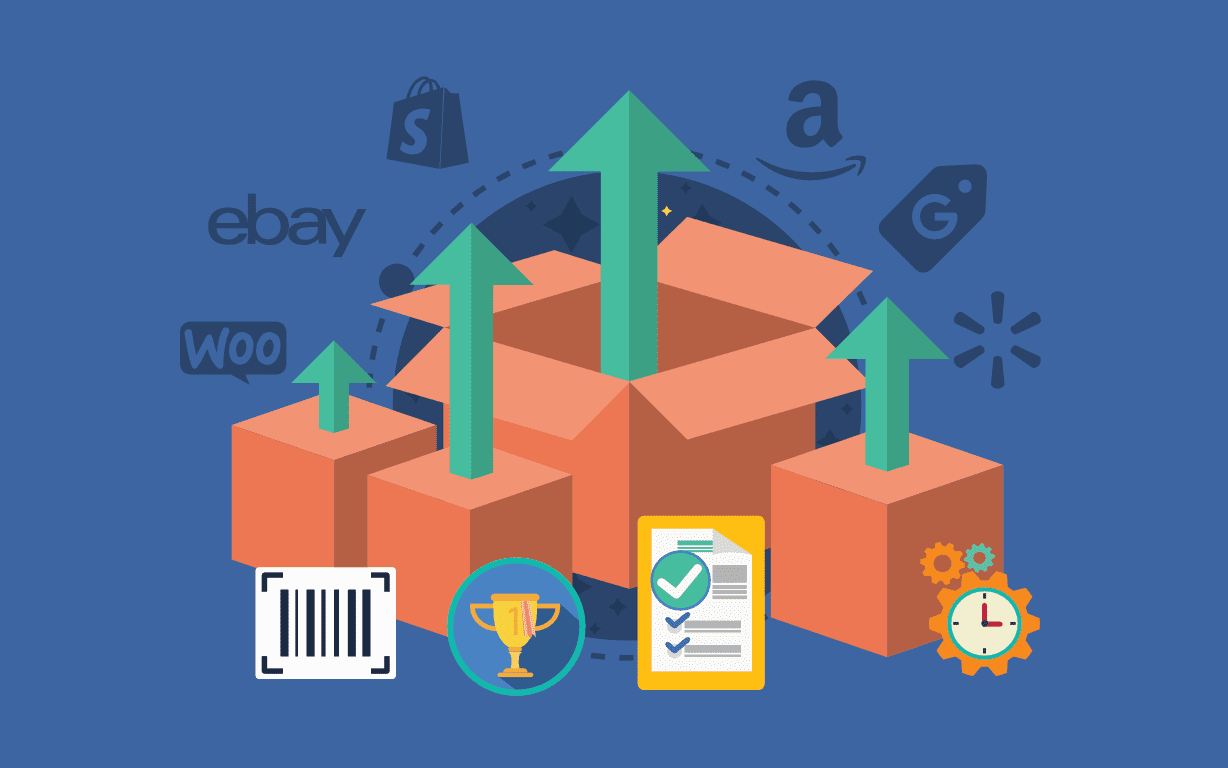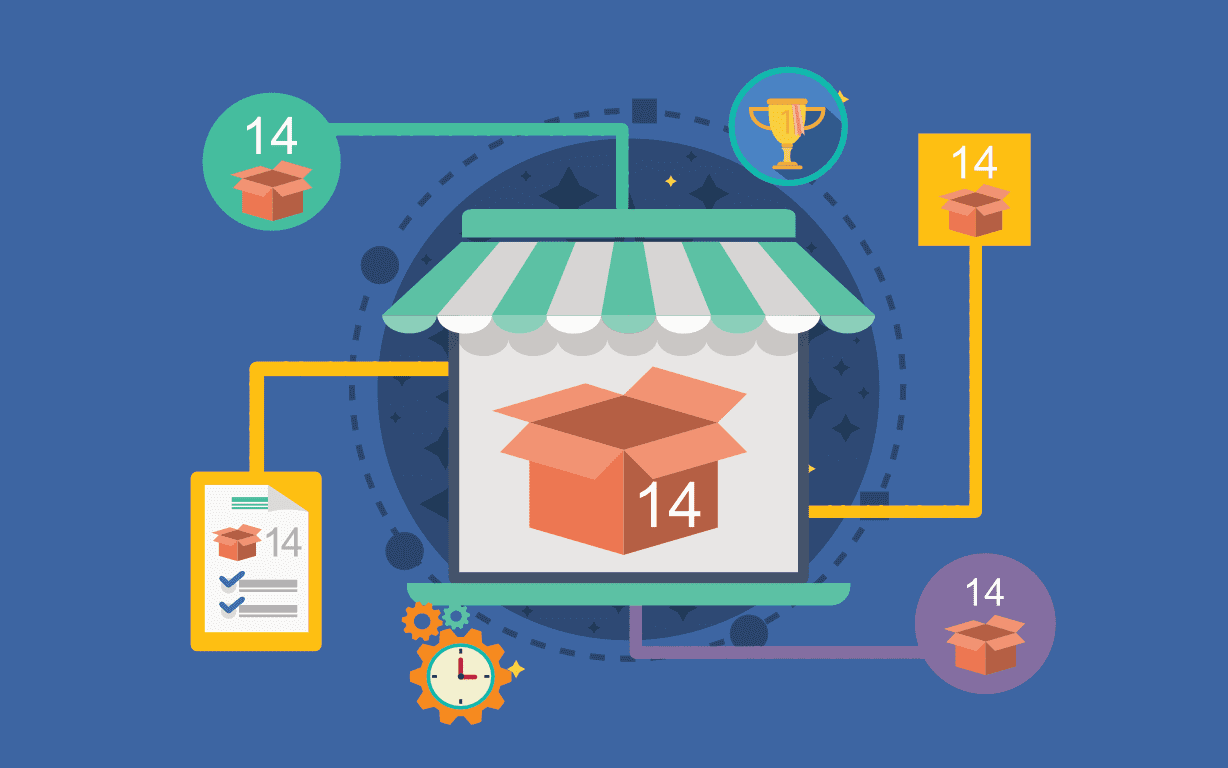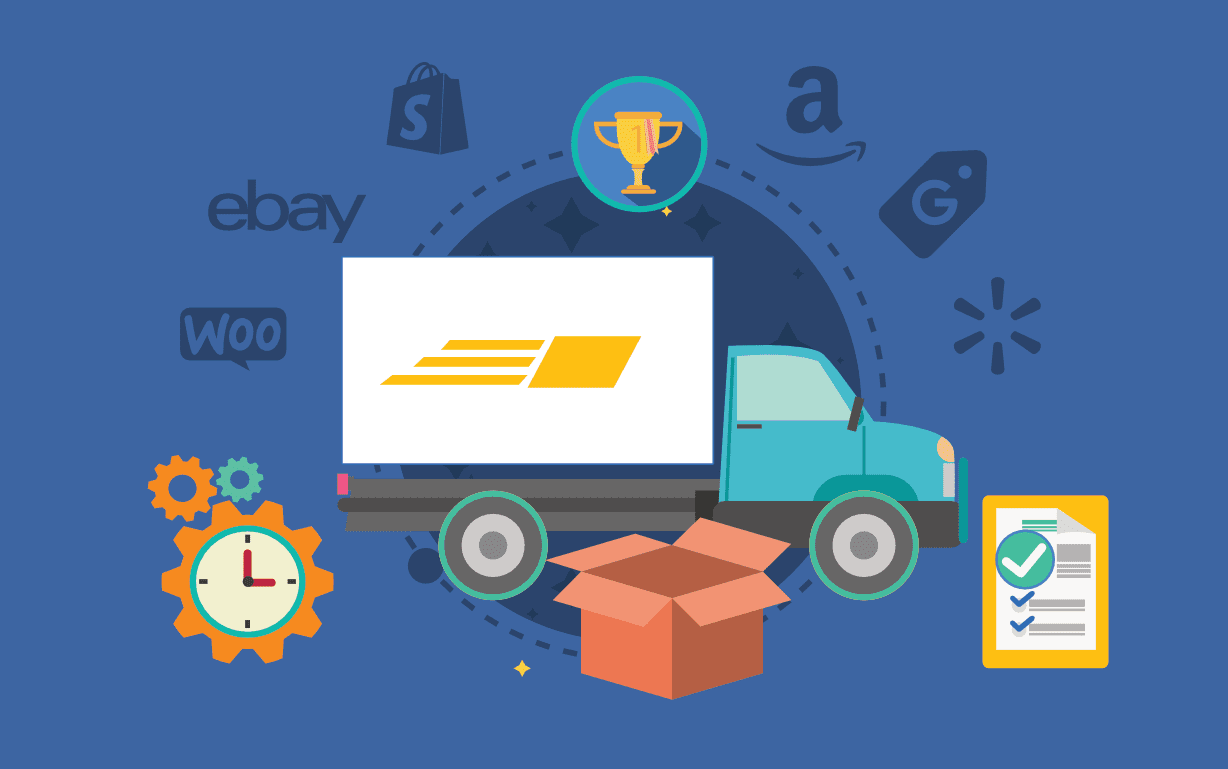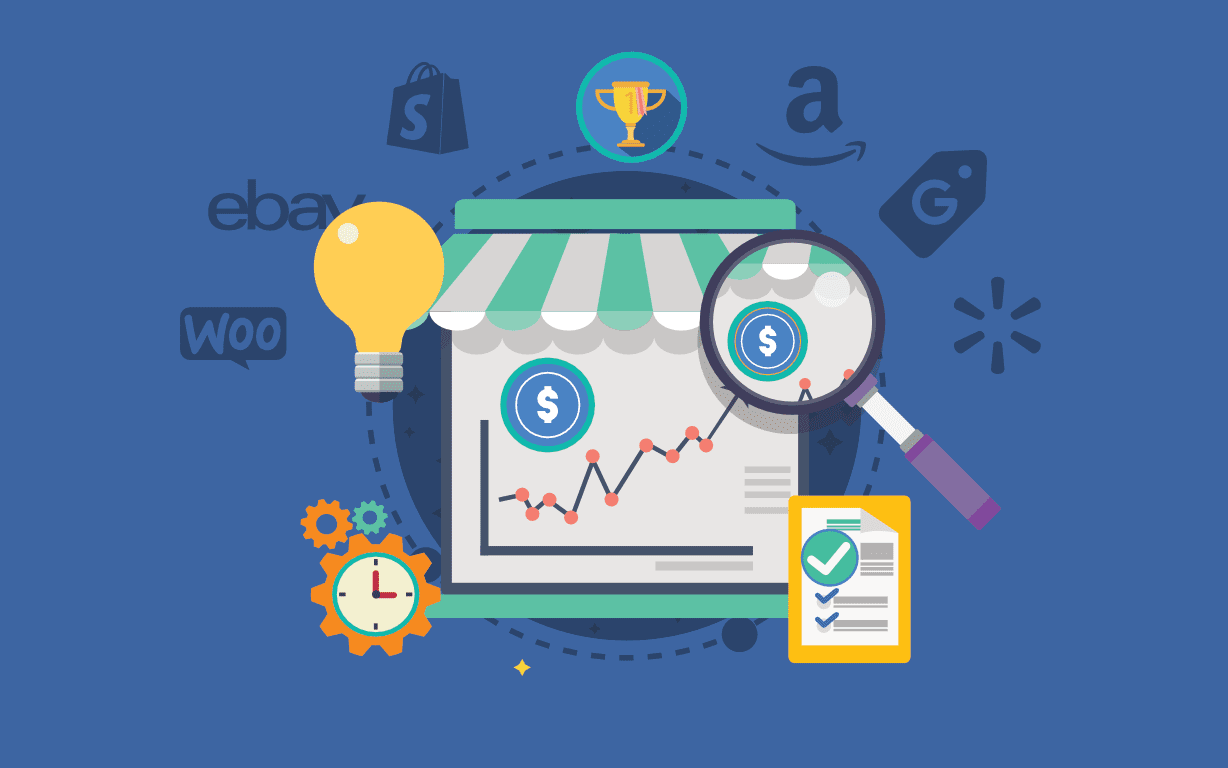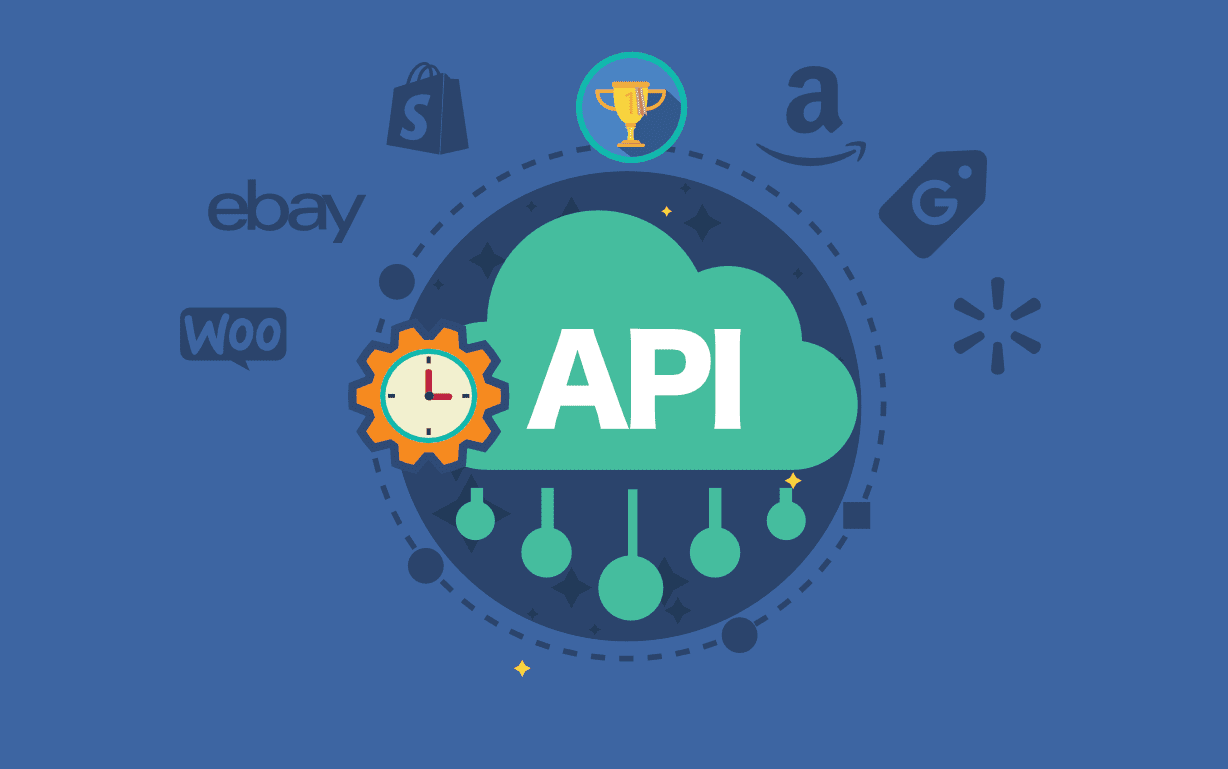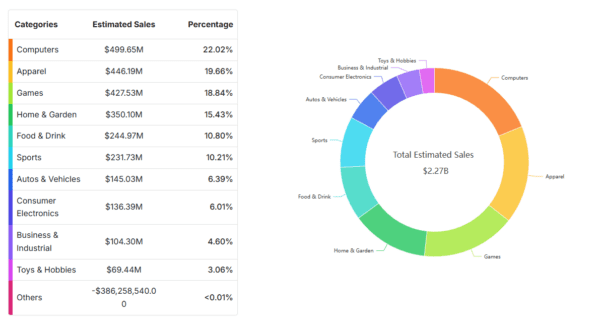
Reaching $100K in revenue is a milestone that many ecommerce sellers dream of but few achieve. But, why is it so? The answer lies in their inability to execute the right ecommerce growth strategies.
If you’re looking to maximize revenue and profits, then this guide is here to help. We detail the most crucial growth strategies with actionable tips to implement immediately.
Whether you’re a retail arbitrage seller, dropshipper, or a growing SMB, these strategies are designed for entrepreneurs just like you!
You Might Also Like: 33 Proven eCommerce Growth Hacks for Long-Term Success
1. Be Efficient with Inventory Management

Pain Point
- Out-of-stock products often lead to missed sales.
- Overstocking ties up cash in products that don’t sell quickly.
- Products being shown as “Available” online while not being in stock leads to lost customers and damages business reputation.
- Poor inventory practices, in general, lead to inefficiencies that put unnecessary strain on the business.
Strategy
Efficient inventory management starts with real-time tracking. When you always have a clear picture of stock levels, you can avoid inventory problems.
For example, while conducting real-time tracking, you can see which products are selling fast and which are slow. This gives an opportunity to determine the right products to stock up more frequently.
Actionable Tips
- Set up inventory management software that provides real-time updates and automates stock adjustments.
- Use demand forecasting tools to predict which items you’ll need during peak seasons.
- Sync your inventory across all sales channels to prevent overselling or underselling.
- Check out SellerChamp’s Inventory Sync – an extensive tool to take care of all your inventory management needs.
2. Optimize Multi-Channel Selling

Pain Point
Expanding to selling on multiple channels is an amazing (and almost essential) strategy for maximizing revenue while building a brand.
As beneficial as this approach is, it also comes with challenging complexities relating to,
- Management of product listings across all channels
- Compliance with each channel’s unique regulations
- Timely processing of orders
- Tracking order processing and shipping
Strategy
Multi-channel problems arise primarily due to an overload of information and an inability to process all channels simultaneously. Thus, an excellent ecommerce growth strategy to avoid these problems is to focus on centralization.
Having a unified dashboard with updated information from all sales, inventory, and shipping platforms will reduce your workload while ensuring consistency. Additionally, tailoring your approach to each marketplace allows you to fully leverage their unique audiences for maximum benefit.
Actionable Tips
- Use multi-channel listing tools that let you upload, edit, and sync your product data from one central dashboard.
- Check out our blog on tips and tricks for selling on multiple channels.
- Customize product descriptions for each marketplace. You can use templates for customization.
- Maintain consistent pricing across platforms.
- Find and set up multi-channel inventory sync tools.
Try SellerChamp for Yourself!
Schedule a demo today and discover how our Bulk Lister can help you list more products, increase sales, and grow your e-commerce business faster than ever.

3. Use Automation for Order Processing

Pain Point
A common challenge growing businesses face is proper management of increasing order volumes.
Growing sales become a burden when being processed manually. You don’t just struggle to keep up but also end up with increased errors like delayed shipments, missed orders, and incorrect deliveries. This leads to customer dissatisfaction, negative reviews, and damage to reputation.
Strategy
By integrating your system with an automation-based order management software, you can reduce manual tasks, speed up fulfillment, and improve accuracy. Automation as an ecommerce growth strategy ensures that every step, from receiving an order to delivering it, happens seamlessly.
SellerChamp offers varying approaches to order management for different types of e-commerce businesses. Find the right solution for your business here.
Actionable Tips
- Use tools that integrate with shipping services and offer fast pick-and-pack via pick-locations.
- Maintain up-to-date inventory by validating stocks every 24 hours. You can use SellerChamp to do this for you automatically.
- Monitor key metrics like order fulfillment times, inventory stats, and shipping accuracy to identify and address problems with order processing.
4. Utilize Data-Driven Insights

Pain Point
Making decisions based on intuition instead of data can lead to wasted resources and missed opportunities.
When you don’t leverage data, you miss out on identifying the right opportunities and trends leading to reduced customer interest and retention.
Strategy
Data-driven insights are not just the most critical component of an ecommerce growth strategy, but can also help you make informed decisions when working. With data analytics, you can,
- Analyze sales trends
- Study consumer behavior
- Track incoming stock and orders, inventory levels, and outgoing deliveries
Actionable Tips
- Leverage analytics tools to monitor e-commerce business metrics.
- Break down larger goals into smaller and more easily achievable ones that can be conveniently monitored.
- Define clear KPIs when using data for growth. Use indicators that align with your business and growth plans.
- Collect competitor data and use it to refine your pricing strategy and stay competitive. Check SellerChamp’s RePricer for automated pricing updates.
- Experiment with A/B testing for ads, product images, and descriptions to optimize conversion rates.
5. Build a Memorable Brand Identity

Pain Point
Today, simply putting your product in front of the customer or selling it at the cheapest rates is not enough. In today’s competitive market where memorability matters most, you need to build a brand identity that is solely yours.
Failing to be memorable will cause your business to be lost among thousands just like you.
Strategy
By being memorable, you can build customer trust and loyalty.
Focus on branding yourself as a transparent, customer-first business by defining the right values. Understand your audience and know what sets you apart from the rest; convey this strongly via your words, visuals, and interactions with customers.
Actionable Tips
- Incorporate your brand voice into every element of the business, whether it’s blogs, ads, or product packaging.
- Invest in high-quality visuals and detailed product descriptions to highlight the benefits of your products.
- Prioritize responsive customer support and offer hassle-free returns.
- Showcase user-generated content and reviews as social proof to build credibility.
Want to scale your business with ecommerce growth strategies? Check out this FREE 5-point guide on streamlining operations for growth.
Try SellerChamp for Yourself!
Schedule a demo today and discover how our Bulk Lister can help you list more products, increase sales, and grow your e-commerce business faster than ever.


